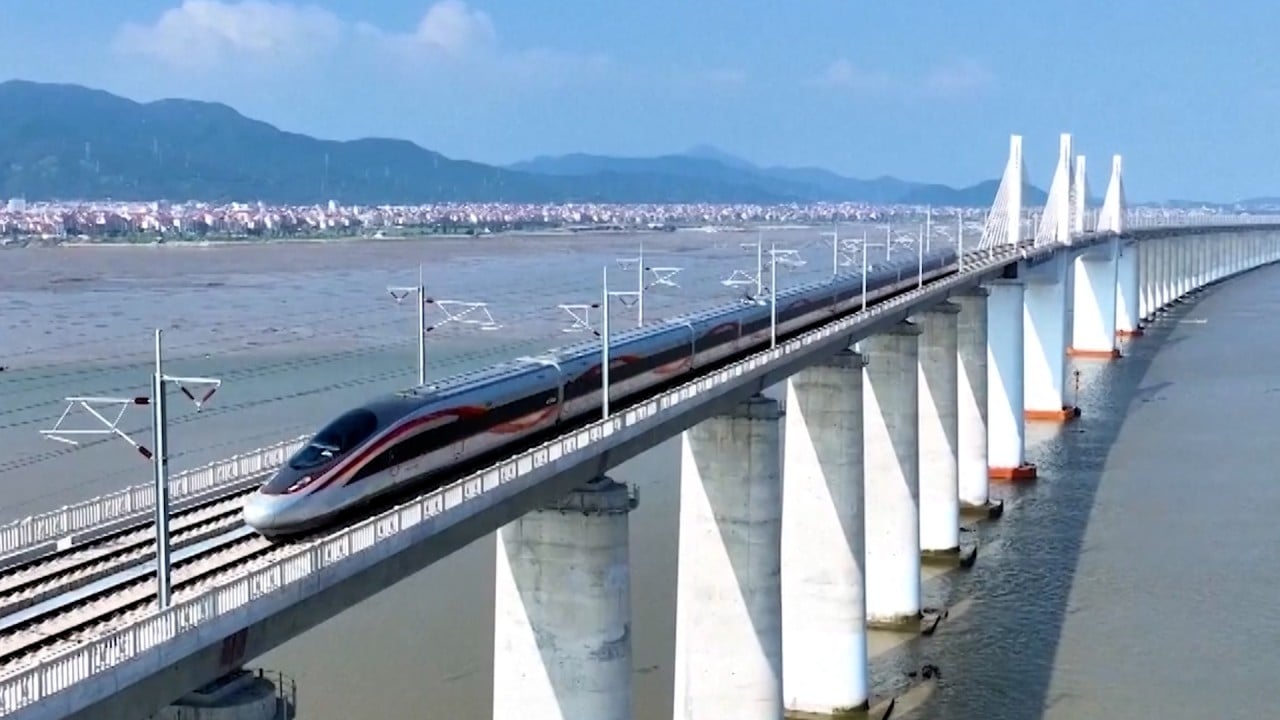China launched its first high-speed rail line in 2008, and the network is considered essential to the world’s second-largest economy and its 1.4 billion population.
The CR450 is expected to enter service by 2025, with a nationwide research project focusing on key rail technology ranging from automatic control and wheel design, to the steering system, rail upgrades and safety measures.
Are high-speed trains becoming Xi Jinping’s preferred way to travel in China?
In June, the China State Railway Group completed performance tests on new hi-tech components critical for the CR450, setting a record of 453km/h during a test run – said to be the fastest in the world – marking a “significant milestone” in its development.
The test was carried out on the Meizhou Bay cross-sea bridge, which is one of the major components of the high-speed rail network between Fuzhou and Xiamen in the southeastern province of Fujian.
China State Railway Group said the CR450 is expected to be more environmentally friendly and energy-efficient compared to the existing trains in the Fuxing series.
China plans to boost its railway network to 165,000km (102,500 miles) by 2025, including 50,000km of high-speed rail.
By the end of last year, China’s railway network covered 159,000km, including 45,000km of high-speed rail, officials said during the work conference.
Passenger numbers on China’s national railway network are also expected to rise by 4.7 per cent from a year earlier to 3.855 billion in 2024, they added.
Cargo transport, meanwhile, could reach 3.9 billion tonnes in 2024, up by 0.5 per cent compared to last year.
